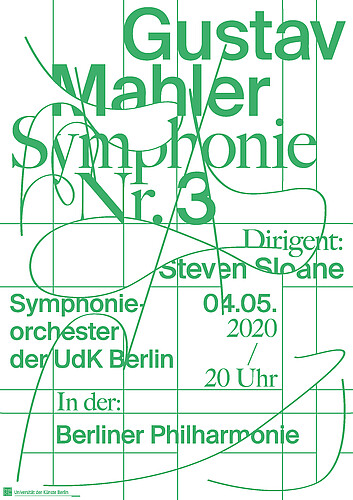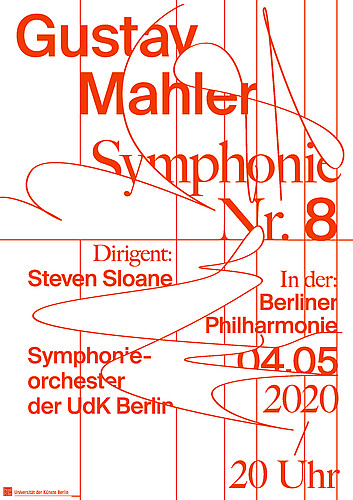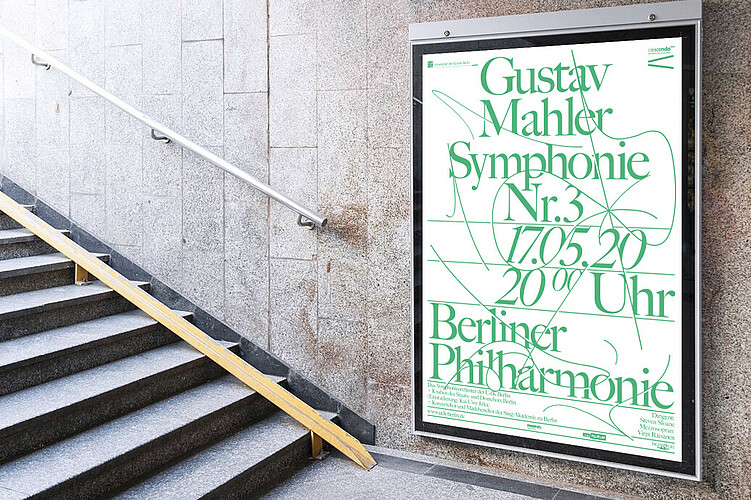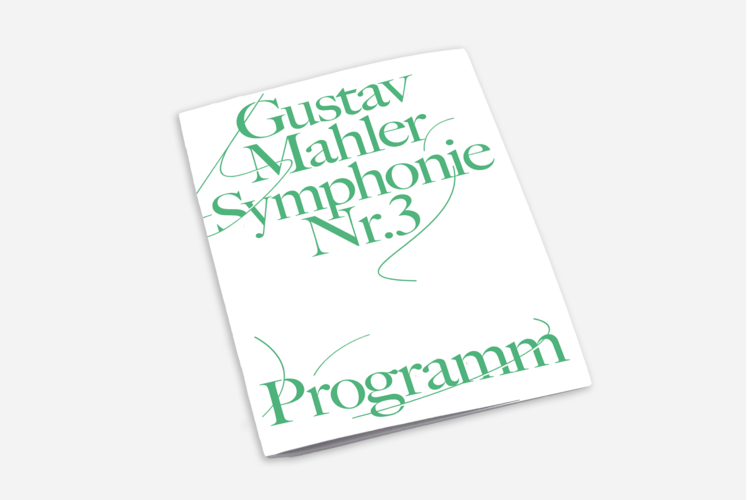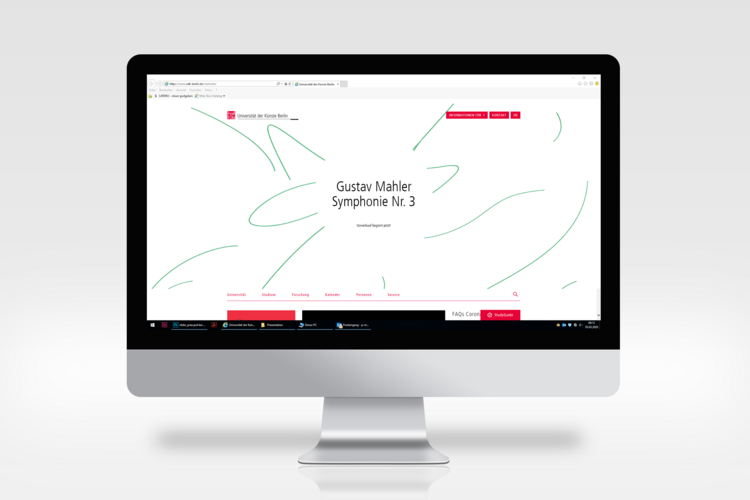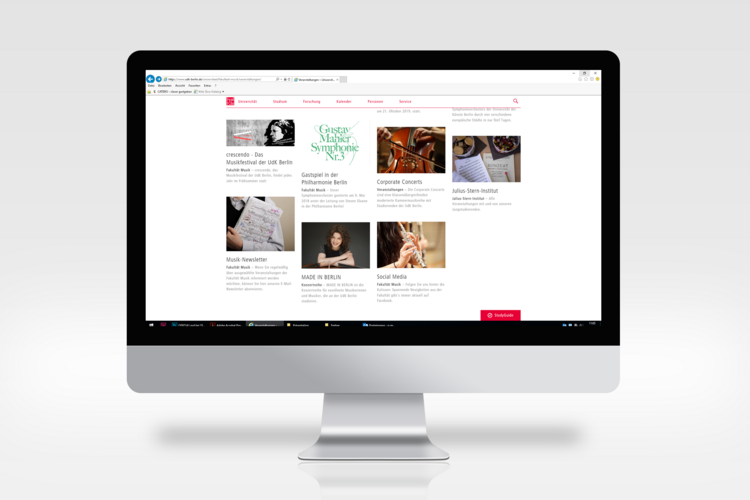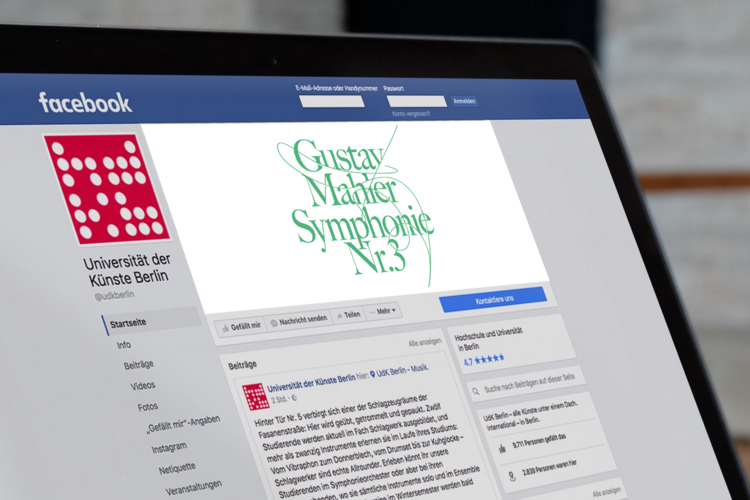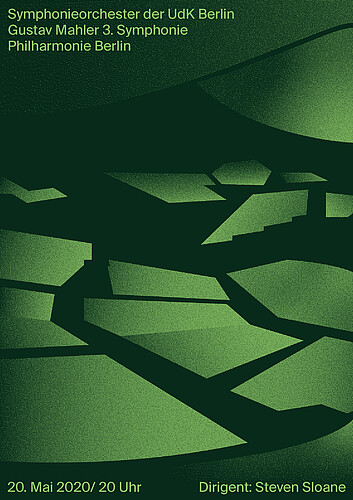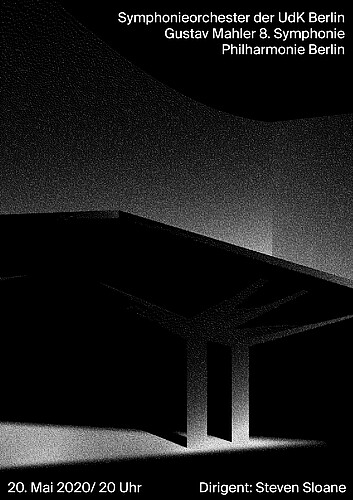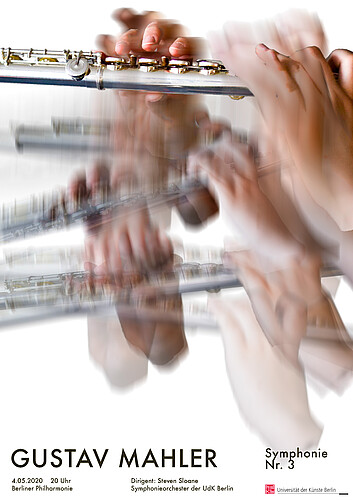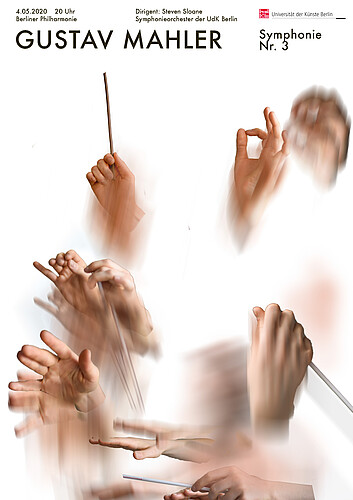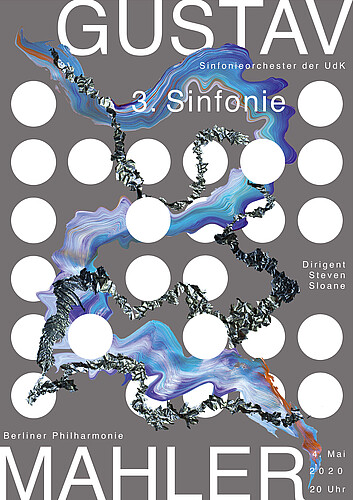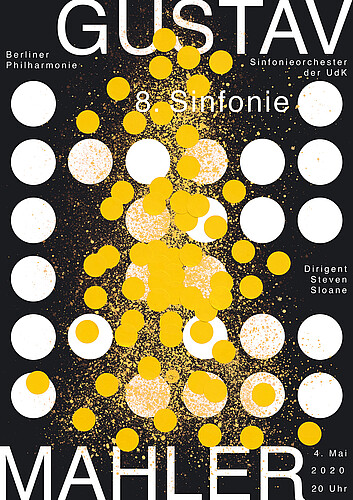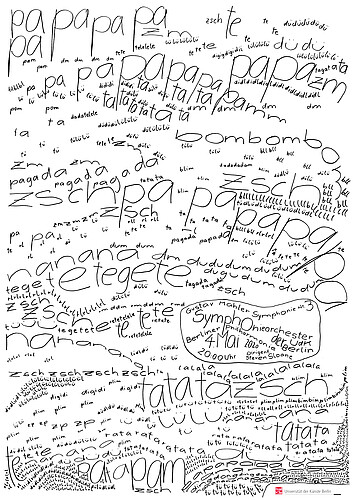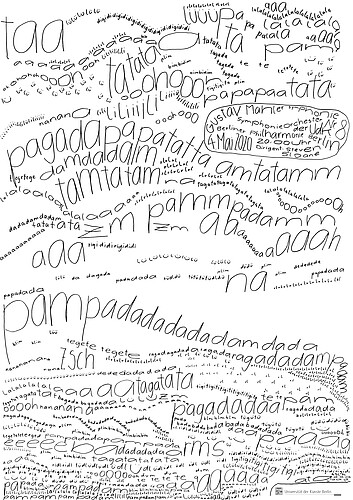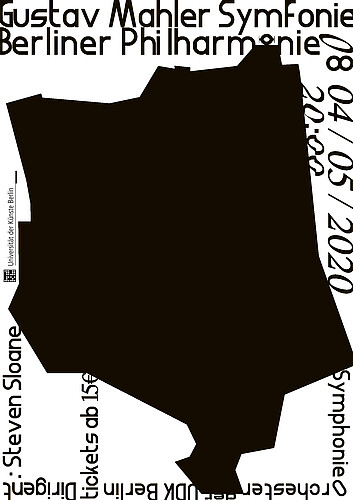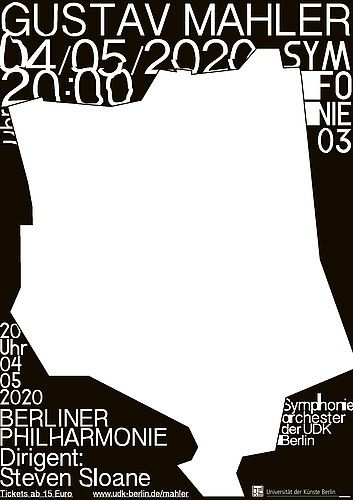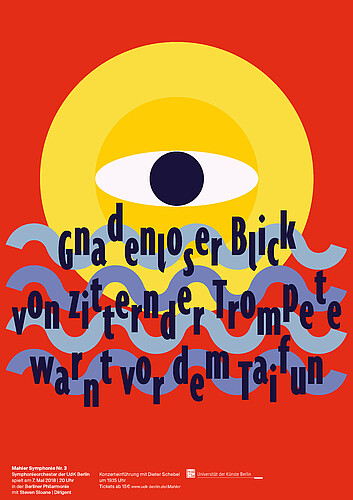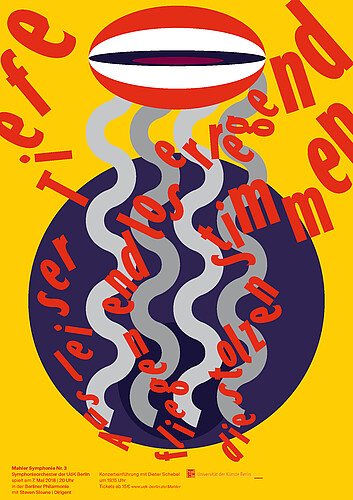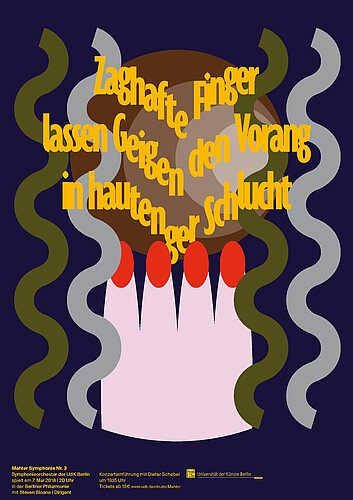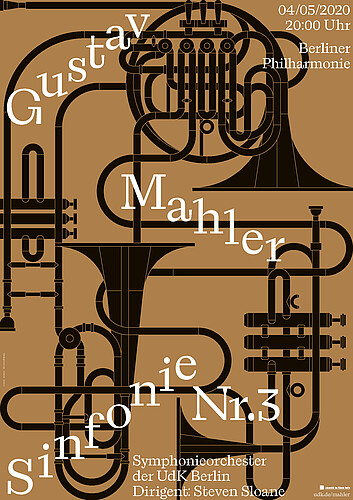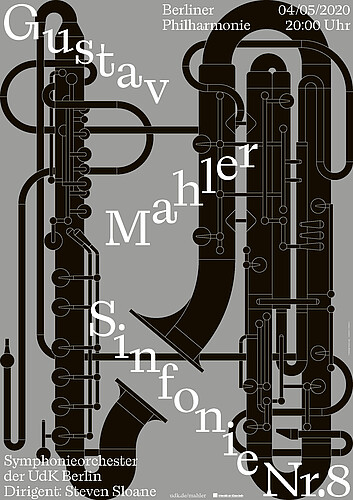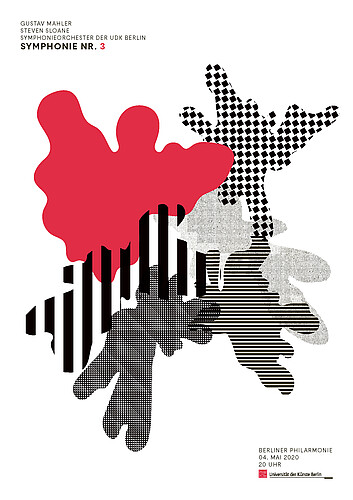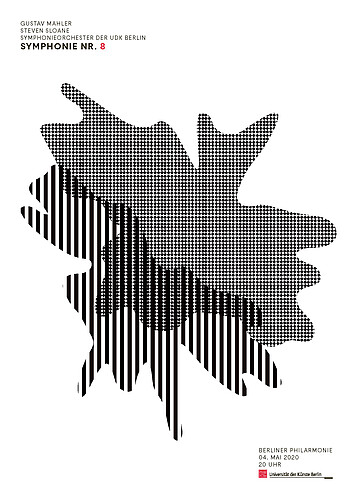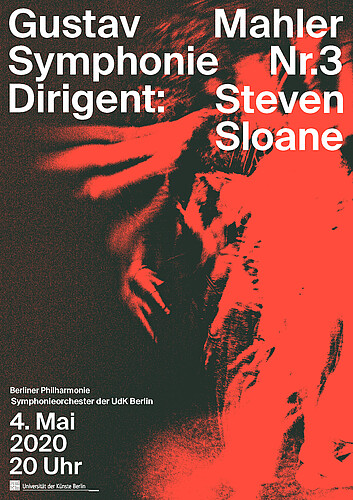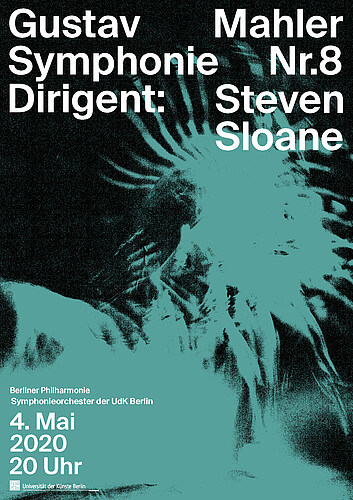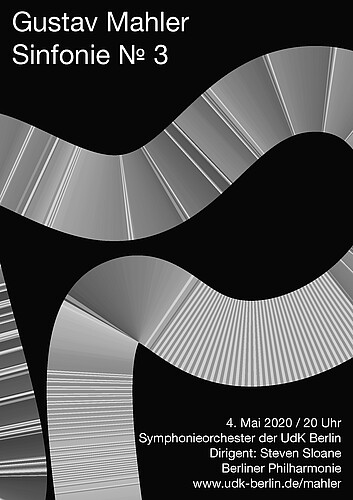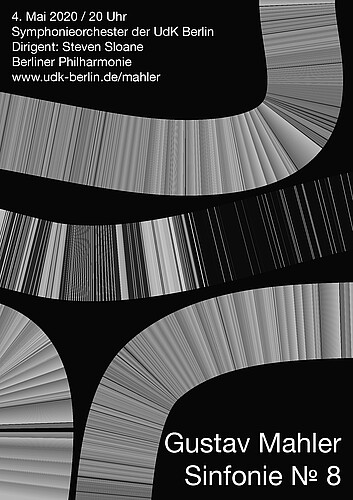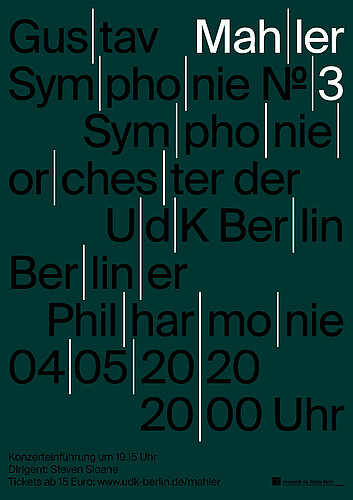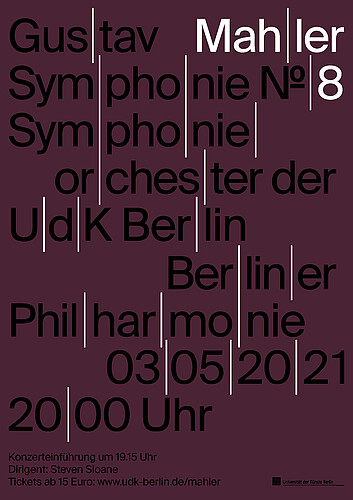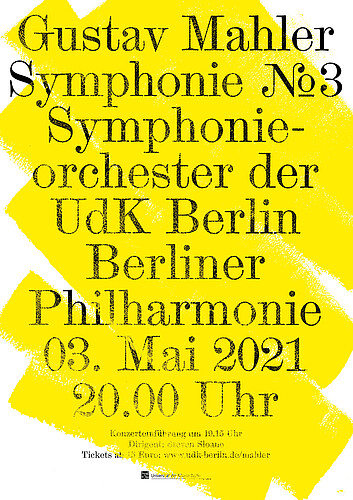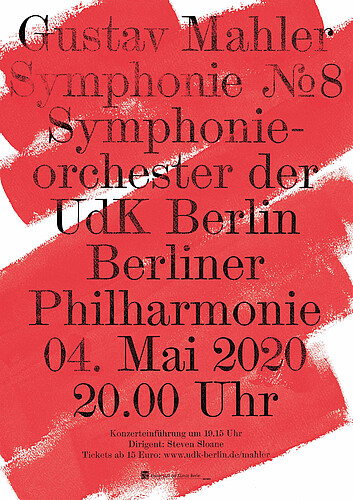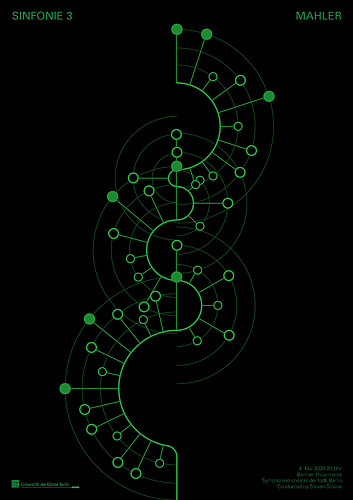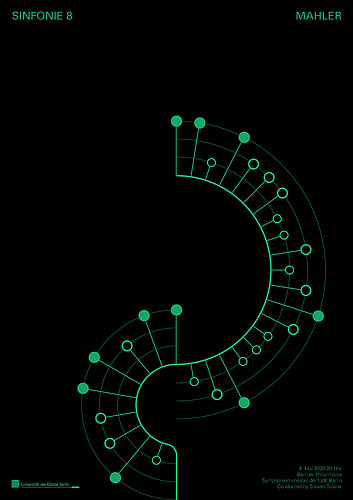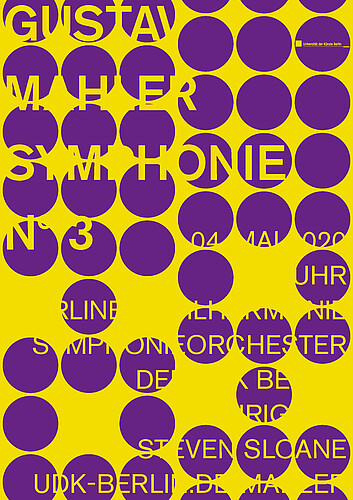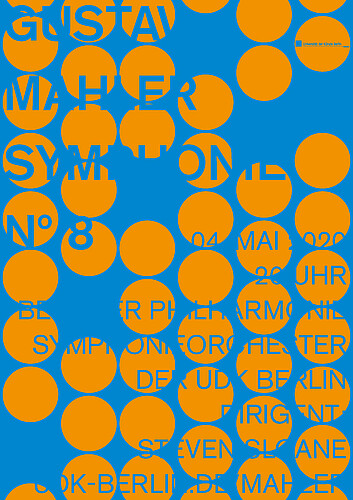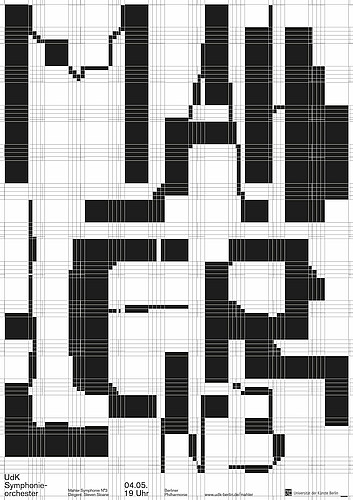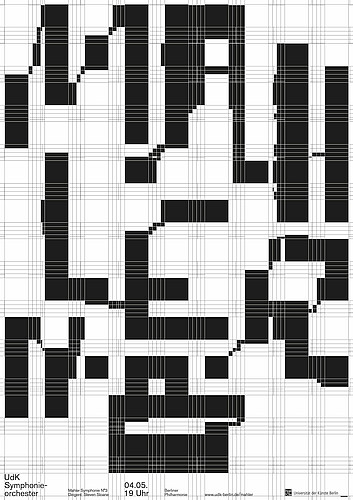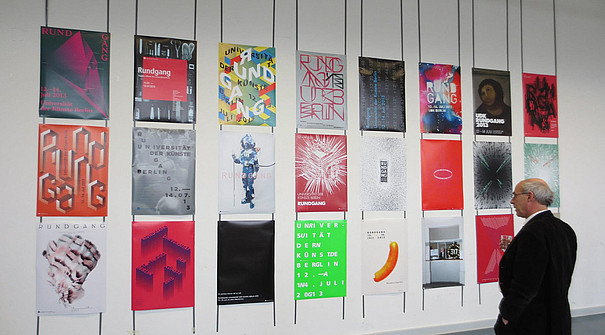Design competition for the College of Music with the Visual Systems class
The competition
The design for the promotion of the guest performance of the UdK Berlin Symphony Orchestra in the Berlin Philharmonic Hall in May 2020 was decided in a competition and supported in an advisory capacity by the Department of Marketing and University Events.
The competition was held in the summer semester 2019 as part of the seminar Notation Laboratory in the Visual Communication / College of Architecture, Media and Design, supervised by Bernd Grether (artistic assistant in the Visual Systems class of Prof. David Skopec). The task of the seminar was to develop a graphic system for the design of an event poster, which uses techniques and elements from previously studied notation systems to visually represent the music of Gustav Mahler's Symphony No. 3, which will be performed. It was not a matter of an exact transcription of the score in the sense of a notation system, but of creating a visual composition based on musical parameters. The seminar was supported by interdisciplinary workshops in collaboration with the Experimental Music Orchestra of Marc Sabat (artistic and scientific assistant at the Institute for New Music).
In joint short-term projects, students from the Colleges of Design and Music got to know each other at the acoustic/visual interface and new synergies were created.
